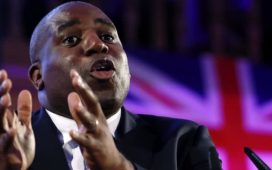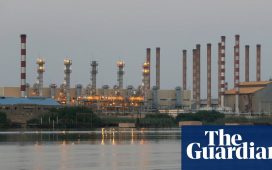Theresa May is steeling herself for a drubbing in local elections across England, as speculation intensifies about how long she can stay as UK prime minister and how unpopular her ruling Conservative party really is.
Here is your FT guide on what to look for — which results most matter and what the big trends are likely to be.
The Tories are undoubtedly on the back foot in Thursday’s polls. Mrs May’s party is defending more than half of the 8,500 seats up for election across 248 English local authorities. The seats were won in 2015, at the height of the party’s popularity and the year that David Cameron won a surprise majority in the general election.
One of the big questions will be whether the Tory losses that the elections are expected to produce can be attributed to a natural decline in the party’s popularity after nine years in office — or whether they are much more sweeping than that.
Another big issue is who the main beneficiary will be — whether the overall victor of Thursday’s contests will Liberal Democrats, Labour or another group.
At stake are all the seats on 119 district councils and 30 unitary authorities along with about a third of the seats on 49 district councils and 33 metropolitan authorities.
When will we know who won?
The first results are expected shortly after midnight. By early Friday morning, results for about half the seats being contested will be known. Results will continue to trickle in for much of the day, with about half of the councils expected to have declared results by midday. The last results are not expected until late on Friday evening.
The first two councils expected to declare are dominated by the major parties, so unexpected results could give an indication of things to come. These are Broxbourne in Hertfordshire, where the Conservatives hold 27 of the 30 council seats and 10 of the 11 seats being contested, and Halton in the north-west of England, where Labour controls 52 of the 56 seats and 18 of the 19 being contested.
How bad will Conservative losses be?
Mrs May’s party has the most to lose, with most of the ballots being held in Tory shires. The Conservatives have 4,838 current councillors up for election, according to a Press Association tally that includes changes since the 2015 local elections. Less than half as many Labour councillors face re-election.
Robert Hayward, a Conservative peer and pollster, estimated that the Tories are likely to lose around 800 seats, primarily to the Liberal Democrats, but also to Labour.
Ceding anything close to 800 would be the Tories’s worst local election result since 1995, when the party suffered net losses of 2,018 seats under an embattled John Major. The Conservatives have not lost more than 577 seats in one election cycle for 22 years.
Is it straightforward to work out the parties’ performance?
Sadly, no. Because of different methods, seemingly contradictory numbers will be reported by various media outlets.
Lord Hayward’s calculations use the 2015 results as the baseline.
But over the past four years there have been boundary changes, reductions in the size of assemblies, by-elections and defections.
The net effect of these changes had already reduced the number of Conservative councillors by 318 since the day after the 2015 election. Similarly the Lib Dems already have 33 more councillors than they racked up four years ago.
Some calculations — such as those used by the Press Association and the Financial Times — use as a baseline the current number of councillors.
These are therefore likely to produce a less dramatic number than comparisons with the 2015 result. This could make the difference between headlines that trumpet Tory losses of, say, more than 800 and alternative narratives of losses of less than 500.
Will Brexit benefit the Lib Dems?
The vast majority of the English council areas holding elections on Thursday voted Leave in the 2016 EU referendum. If Brexit is a big factor in people’s decisions on who to vote for, this could limit the appeal of the Remain-supporting Lib Dems.
But Conservatives also control 22 of the councils in Remain-supporting areas where the Lib Dems hope to make inroads. One council to watch will be Bath & North East Somerset, where the Lib Dems currently hold 17 of the 59 seats and 36 Conservatives face re-election.
Another Tory-run council Lib Dems will be targeting is Winchester, where they need to gain just one of 10 Tory seats being contested to take control. Other heavily Remain-voting areas where Conservative council majorities are at risk include St Albans and Warwick.
However six of the seven councils where Lib Dems are defending a majority are in Leave-voting areas. Three Rivers in Hertfordshire on the fringes of London is the most marginal, and South Somerset and Eastbourne in Sussex are full-council elections. Apathy by pro-Brexit Conservatives could help the Lib Dems retain control.
How low can turnout go?
Many traditionally Conservative supporters are angry about Mrs May’s handling of Britain’s departure from the EU and the delay to Brexit from March 29 to a scheduled date of October 31.
But disappointed Eurosceptics have no obvious place to go: Nigel Farage’s Brexit party is not contesting the local elections and the UK Independence Party is not a factor on the scale it was in 2015. Many Ukip candidates, activists and supporters have fled the party as it drifts to the right fringe of British politics.
Abstentionism may therefore be the biggest threat to Tory councillors in places like Southend and Peterborough, where they hold slim council majorities.
Participation in local elections is usually low. Just 35 per cent of electors voted in last year’s local elections, and the low water mark in recent years was 31 per cent in 2013. Turnout in today’s election could be even lower.
Mayoral elections
In addition to councils, six mayors will be elected. Expect results in Copeland and Middlesbrough overnight. Further results will come from Bedford, Leicester, Mansfield and the new North of Tyne metropolitan area on Friday afternoon.
Northern Ireland
All 462 seats across the 11 local councils in Northern Ireland are being decided on Thursday. Northern Ireland councillors are elected using a single transferable vote system and results will not be known until Friday.
The Democratic Unionist party is the largest party with 130 councillors overall, followed by Sinn Féin with 105.














